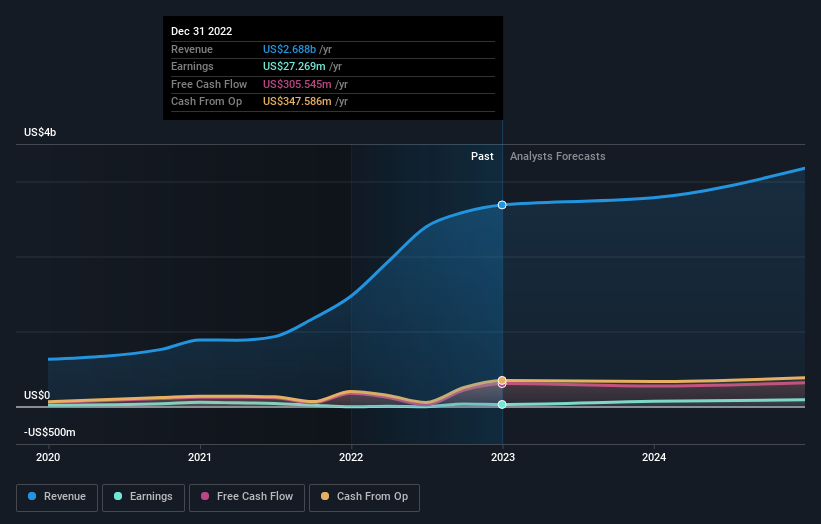Stagwell (NASDAQ:STGW investor one-year losses grow to 14% as the stock sheds US$117m this past week
Investors can approximate the average market return by buying an index fund. But if you buy individual stocks, you can do both better or worse than that. Investors in Stagwell Inc. (NASDAQ:STGW) have tasted that bitter downside in the last year, as the share price dropped 14%. That falls noticeably short of the market decline of around 8.8%. Stagwell may have better days ahead, of course; we've only looked at a one year period. The falls have accelerated recently, with the share price down 14% in the last three months.
After losing 13% this past week, it's worth investigating the company's fundamentals to see what we can infer from past performance.
Check out our latest analysis for Stagwell
While the efficient markets hypothesis continues to be taught by some, it has been proven that markets are over-reactive dynamic systems, and investors are not always rational. One imperfect but simple way to consider how the market perception of a company has shifted is to compare the change in the earnings per share (EPS) with the share price movement.
During the last year Stagwell grew its earnings per share, moving from a loss to a profit.
Earnings per share growth rates aren't particularly useful for comparing with the share price, when a company has moved from loss to profit. But we may find different metrics more enlightening.
Stagwell managed to grow revenue over the last year, which is usually a real positive. Since the fundamental metrics don't readily explain the share price drop, there might be an opportunity if the market has overreacted.
You can see how earnings and revenue have changed over time in the image below (click on the chart to see the exact values).
We know that Stagwell has improved its bottom line lately, but what does the future have in store? If you are thinking of buying or selling Stagwell stock, you should check out this free report showing analyst profit forecasts.
A Different Perspective
Stagwell shareholders are down 14% for the year, even worse than the market loss of 8.8%. There's no doubt that's a disappointment, but the stock may well have fared better in a stronger market. With the stock down 14% over the last three months, the market doesn't seem to believe that the company has solved all its problems. Basically, most investors should be wary of buying into a poor-performing stock, unless the business itself has clearly improved. I find it very interesting to look at share price over the long term as a proxy for business performance. But to truly gain insight, we need to consider other information, too. Even so, be aware that Stagwell is showing 4 warning signs in our investment analysis , you should know about...
But note: Stagwell may not be the best stock to buy. So take a peek at this free list of interesting companies with past earnings growth (and further growth forecast).
Please note, the market returns quoted in this article reflect the market weighted average returns of stocks that currently trade on American exchanges.
Have feedback on this article? Concerned about the content? Get in touch with us directly. Alternatively, email editorial-team (at) simplywallst.com.
This article by Simply Wall St is general in nature. We provide commentary based on historical data and analyst forecasts only using an unbiased methodology and our articles are not intended to be financial advice. It does not constitute a recommendation to buy or sell any stock, and does not take account of your objectives, or your financial situation. We aim to bring you long-term focused analysis driven by fundamental data. Note that our analysis may not factor in the latest price-sensitive company announcements or qualitative material. Simply Wall St has no position in any stocks mentioned.
Join A Paid User Research Session
You’ll receive a US$30 Amazon Gift card for 1 hour of your time while helping us build better investing tools for the individual investors like yourself. Sign up here



